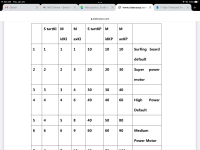Of course. Should have looked. DUH.Chain - torque?
Torque sensor options in 2022?
Wealth of sensor info in the PAS chapter. Worth a refresher look for some possibilities.

Cycle Analyst V3 preview and first beta release
Here is a link to the now unofficial user guide and other documents and thread index by Teklektik http://www.endless-sphere.com/forums/viewtopic.php?p=571345#p571345 and the wiki http://www.endless-sphere.com/w/index.php/Cycle_Analyst_v3_Setup and the official CAv3 info page...endless-sphere.com
Lots of interesting stuff in that lot. Now to see if there's something there that might be coerced into functioning at 10x design load. Where there's a will there's a way.
Maybe a bottom bracket spindle type, one end anchored and the other with a lever arm on it running a follower on the chain. Vary the lever arm length and chain deflection to tune the range?
But then some of the other sensors like the defunct BeamTS look suspiciously like a common beam load cell. It's the signal processing that's probably the time consuming part and those BB units probably have a fair bit of that covered I'd guess.
Hmmmmm.
Last edited:


